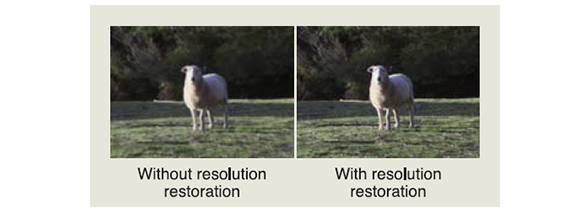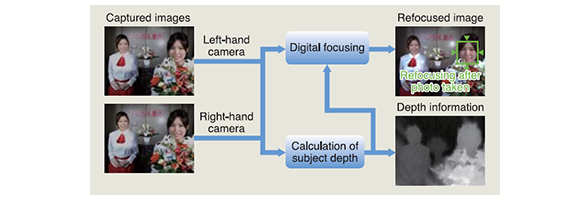- Back to the previous page
- AI Technology
Signal Processing Technologies for CMOS Image Sensors
Toshiba has developed two technologies for complementary MOS (CMOS) image sensor applications: a resolution restoration technology that improves the resolution of a thin lens, and a digital focusing technology that allows users to change the focus point in photos after they have been taken by using the camera-tosubject depth information from two cameras.
In order to reduce the thickness of smartphones, it is necessary to use a thin camera module (particularly with a thin-lens combination). However, reducing the number of lenses decreases the image resolution. To explore the optimal trade-off between the number of lenses and camera resolution, we analyzed how images become blurry when thin lenses are used. As a result, we developed the resolution restoration technology, which corrects image-blurring effects. This technology improves camera resolution, making it possible to develop thin camera modules without compromising resolution.
The digital focusing technology matches two images taken by left- and right-hand cameras to calculate the camera-tosubject depth. While the conventional technique gives false depth information for flat regions of an image, the newly developed hierarchical matching technique improves depth accuracy in flat regions. A conventional autofocus camera cannot adjust the focus after photos are taken, whereas the newly developed digital focusing technology allows users to refocus on any subject because it relies only on mathematical calculation.
We will incorporate these technologies into future products.

Result of processing by resolution restoration technology

Block diagram of digital focusing technology

Result of processing by digital focusing technology


